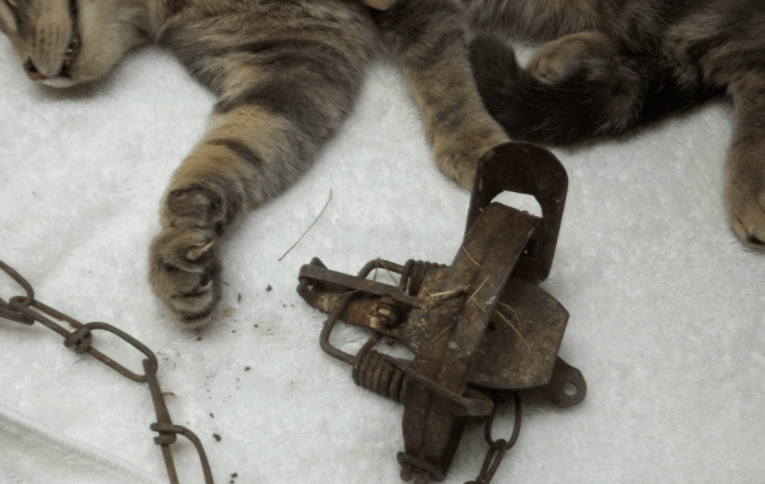NEWPORT — Trapping season starts on the 4th Saturday of October each year in Vermont and runs through March 31st. Each trapping season there are dogs, cats, and other non-targeted animals, including endangered and protected species, who are injured or even killed in traps.
Just two weeks after the official start of trapping season last year, a black lab from Orleans county was injured in a trap that had been set to kill beavers. Luckily, the dog was found and recovered from her injuries.
“I am a veterinarian who has treated dogs and cats caught in traps,” Dr. Peggy Larson, retired Vermont veterinarian, said. “The injuries they suffer were horrendous and most lost their legs.”
Traps may be set on private and public land, including National Wildlife Refuges that are home to federally protected species, including Canada lynx.
Trappers are not required to erect signage as to where they’re trapping, nor are they required to set their traps away from trails.
Baits and lures are used with traps, so a trap set for a coyote can just as likely trap a curious dog or cat. Trappers are not required to report if they catch a non-targeted animal, even if it’s someone’s pet.
The two trap types that are used in Vermont that pose the greatest risk to pets are leghold and Conibear™ (“kill”) traps.
Cats are at the greatest risk since they are often left outside unsupervised.
Quick Tips:
Know when trapping season is, but remember that traps set out of season, as allowed per Vermont’s “wild animals doing damage” statute, or traps left behind after the season ends, still present a threat.
Remember that traps can be set in water, in rivers and streams — especially on banks, so always check the area before allowing your dog to swim.
Keep cats indoors or create a cat-proofed fenced-in yard.

